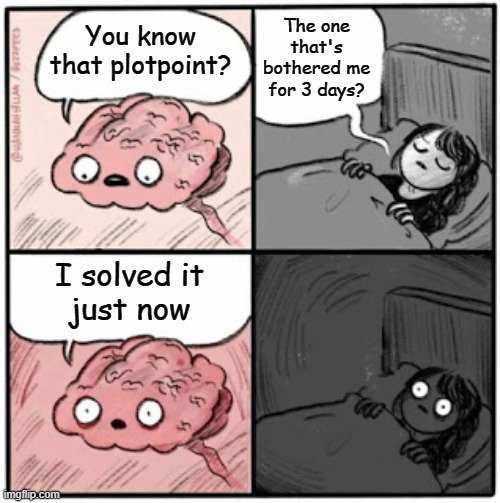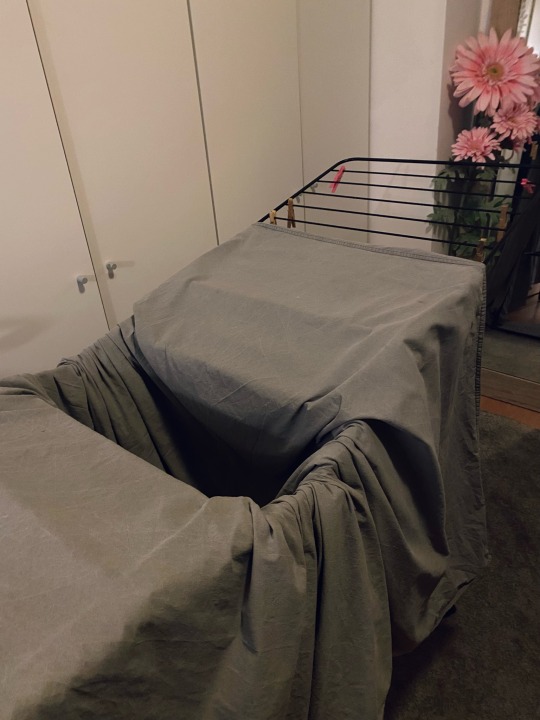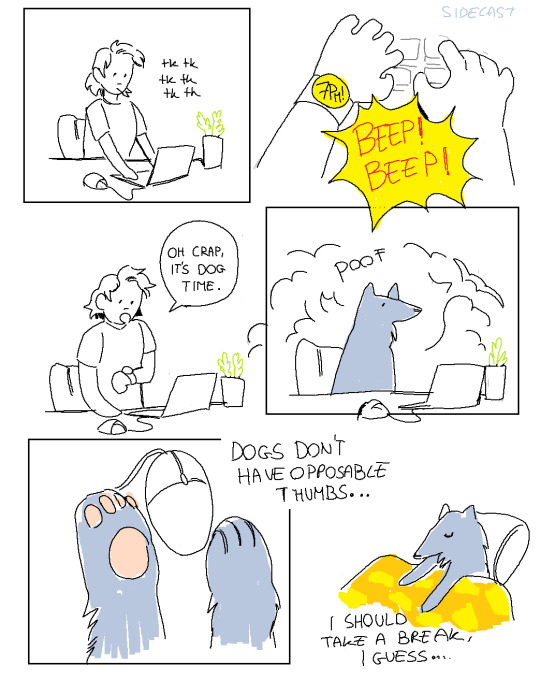#a storyteller
Explore tagged Tumblr posts
Text
you ever think about how george was planning on putting one kiss by dua lipa in the meetup vlog and also how he leaned in for a kiss 2 minutes after meeting dream for the first time? yeah
62 notes
·
View notes
Text
instagram
#protect her#she's bringing fanfic vibes to the gym#and maybe a unicorn and a pony and fresh baked cookies#a treat#a storyteller#Instagram
3 notes
·
View notes
Text
For a New Year I wrote a smutty story based on a fairy tale. It's a fluffy and warm one shot 🥰😂
Here's a snippet

Please enjoy ❤️
Happy New Year
🍾🥳🎆🎉
#iwtv fics#loustat#Louis#Lestat#don't go into the woods#a storyteller#so much love that can break a curse
2 notes
·
View notes
Text
in recognition of World Down Syndrome Day on March 21
#please watch!!#imo this ad does a really good job of storytelling from start to finish#tiktok#down syndrome#1k#5k#10k#15k#20k#30k#40k#50k#75k#100k
104K notes
·
View notes
Text
downsizing seasons from 22 episodes to 13 to 8. describing miniseries as "8 hour movies". loudly declaring that shows with 20+ episodes per season cannot truly be good. complaining that "it couldve been a movie". complaining about filler episodes. complaining about bottle episodes. complaining about episodes that prioritize character over plot. fr i think y'all just dont like television
#text#personal#im complaining both abt people who make tv AND people who watch it#if u dont like long form storytelling just say that and watch/make movies instead my godddd
43K notes
·
View notes
Text
My controversial game design opinion is that "environmental storytelling" should be actually, tangibly present within the game's environments. Hitting the player with a paragraph of lore every time they click on a random item in their inventory is not environmental storytelling – it's just hiding an epistolary novel in your game's UI.
#gaming#video games#game design#environmental storytelling#this is not specifically about dark souls
11K notes
·
View notes
Text
Things Real People Do in Dialogue (For Your Next Story)
Okay, let’s be real—dialogue can make or break a scene. You want your characters to sound natural, like actual humans talking, not robots reading a script. So, how do you write dialogue that feels real without it turning into a mess of awkward pauses and “ums”? Here’s a little cheat sheet of what real people actually do when they talk (and you can totally steal these for your next story):
1. People Interrupt Each Other All the Time In real conversations, nobody waits for the perfect moment to speak. We interrupt, cut each other off, and finish each other's sentences. Throw in some overlaps or interruptions in your dialogue to make it feel more dynamic and less like a rehearsed play.
2. They Don’t Always Say What They Mean Real people are masters of dodging. They’ll say one thing but mean something totally different (hello, passive-aggressive banter). Or they’ll just avoid the question entirely. Let your characters be vague, sarcastic, or just plain evasive sometimes—it makes their conversations feel more layered.
3. People Trail Off... We don’t always finish our sentences. Sometimes we just... stop talking because we assume the other person gets what we’re trying to say. Use that in your dialogue! Let a sentence trail off into nothing. It adds realism and shows the comfort (or awkwardness) between characters.
4. Repeating Words Is Normal In real life, people repeat words when they’re excited, nervous, or trying to make a point. It’s not a sign of bad writing—it’s how we talk. Let your characters get a little repetitive now and then. It adds a rhythm to their speech that feels more genuine.
5. Fillers Are Your Friends People say "um," "uh," "like," "you know," all the time. Not every character needs to sound polished or poetic. Sprinkle in some filler words where it makes sense, especially if the character is nervous or thinking on their feet.
6. Not Everyone Speaks in Complete Sentences Sometimes, people just throw out fragments instead of complete sentences, especially when emotions are high. Short, choppy dialogue can convey tension or excitement. Instead of saying “I really think we need to talk about this,” try “We need to talk. Now.”
7. Body Language Is Part of the Conversation Real people don’t just communicate with words; they use facial expressions, gestures, and body language. When your characters are talking, think about what they’re doing—are they fidgeting? Smiling? Crossing their arms? Those little actions can add a lot of subtext to the dialogue without needing extra words.
8. Awkward Silences Are Golden People don’t talk non-stop. Sometimes, they stop mid-conversation to think, or because things just got weird. Don’t be afraid to add a beat of awkward silence, a long pause, or a meaningful look between characters. It can say more than words.
9. People Talk Over Themselves When They're Nervous When we’re anxious, we tend to talk too fast, go back to rephrase what we just said, or add unnecessary details. If your character’s nervous, let them ramble a bit or correct themselves. It’s a great way to show their internal state through dialogue.
10. Inside Jokes and Shared History Real people have history. Sometimes they reference something that happened off-page, or they share an inside joke only they get. This makes your dialogue feel lived-in and shows that your characters have a life beyond the scene. Throw in a callback to something earlier, or a joke only two characters understand.
11. No One Explains Everything People leave stuff out. We assume the person we’re talking to knows what we’re talking about, so we skip over background details. Instead of having your character explain everything for the reader’s benefit, let some things go unsaid. It’ll feel more natural—and trust your reader to keep up!
12. Characters Have Different Voices Real people don’t all talk the same way. Your characters shouldn’t either! Pay attention to their unique quirks—does one character use slang? Does another speak more formally? Maybe someone’s always cutting people off while another is super polite. Give them different voices and patterns of speech so their dialogue feels authentic to them.
13. People Change the Subject In real life, conversations don’t always stay on track. People get sidetracked, jump to random topics, or avoid certain subjects altogether. If your characters are uncomfortable or trying to dodge a question, let them awkwardly change the subject or ramble to fill the space.
14. Reactions Aren’t Always Immediate People don’t always respond right away. They pause, they think, they hesitate. Sometimes they don’t know what to say, and that delay can speak volumes. Give your characters a moment to process before they respond—it’ll make the conversation feel more natural.
Important note: Please don’t use all of these tips in one dialogue at once.
#creative writing#writing#writblr#writing advice#writers block#writers on tumblr#WritingTips#AmWriting#DialogueWriting#RealisticDialogue#CharacterDevelopment#WritingAdvice#FictionWriting#WritingRealism#WritingProcess#WritingCraft#WritersOfTumblr#WriterCommunity#CreativeWriting#Storytelling#WritingDialogue
10K notes
·
View notes
Text

26K notes
·
View notes
Text

Oskars ancient Greek curse is that every day he wakes up convinced that this time he can totally walk on the drying rack
34K notes
·
View notes
Text
every image of a tawny frogmouth is perfection. i've never seen a single picture of a tawny that dissapoints.
#they're stunning. theyre dignified. theyre old and scruffly. they're invisble. theyre adorable. theyre sillygoofy.#theyre adorably grouchy. theyre full of love. theyre ugly as hell. theyre gorgeous. theyre scared little animals. theyre wise storytellers.#and i genuinely am not saying this to be XD quirkyty or anything but. podargus strigoides is the cutest latin name i've EVER heard.#theyre perfect. everything to me. make me smile in the darkest of times#tawnies
33K notes
·
View notes
Text


dog time AKA the only reason i've been managing not to overwork myself
#comic#ms paint#ms paint comic#work tips#dog#furry#fursona#dogy#dog time#storytelling#doodles#ms paint doodles#nicolart
157K notes
·
View notes
Text
talking to preschoolers is awesome bc they have not fully differentiated stories into 'true stories' and 'imaginary stories' yet so you will tell them about something that happened you once (coyote came out of a bush right in front of you and got startled) and they will tell you about how one time their house was full of coyotes in every room 'including five in the garage' and they're not even like, aware i think of the idea that they are technically 'lying'. they are simply telling stories about coyotes bc its time to tell stories about coyotes.
#like ppl will be like 'kids love to lie' but i think whats going on is the human inclination to storytell. which is pointedly different imo#and like to be clear im not saying they dont know there weren't actually coyotes in their house#its just that like. they don't know why it would matter
53K notes
·
View notes
Text
all stories are about time loops, except for time loops, which are about grief
21K notes
·
View notes
Text
Danny Phantom, The Show:
geeky kid gets super powers from his parents' weird inventions! now he has to fight a rogue gallery of ghosts... but uh-oh! he still has to keep his grades up, deal with his embarrassing parents, and navigate girl troubles! rap theme song!
Danny Phantom, the Fandom, After 19 Years of Fermentation:
a child dies. but not quite. the inherent tension between life and death. the obsession of the dead for faded remnants of the living. warped green shadows on the walls of a dark laboratory. having to hide your true nature from those who should be your greatest allies. the fear of the monster you could become if you let yourself. being a ghost as a metaphor for the trans experience. a cold breath on the back of your neck in the dead of the night. rap theme song!
#also wes is there#danny phantom#okay okay i'm exagerrating on both points obviously#it's been a LONG time since i watched the original tv show#but of course it had elements of these deeper themes and that's why the fandom's lasted so long#but it was a mid 2000s cartoon when serialised storytelling in western animation was still in its infancy#the fandom has spent a long time leaning into the story lines and themes that never would have flown then
22K notes
·
View notes
